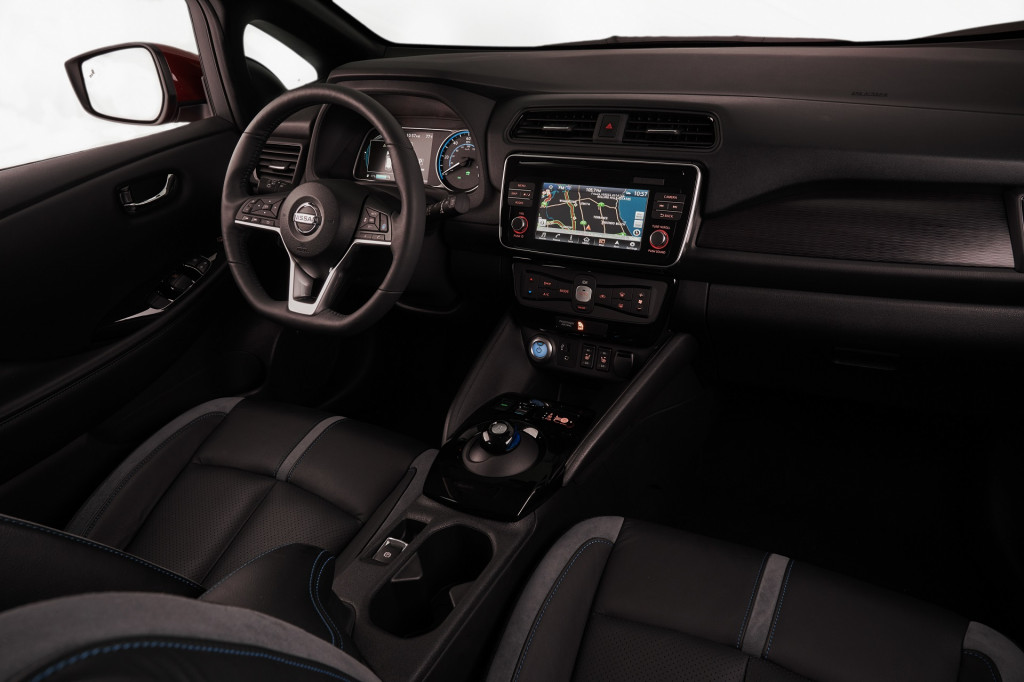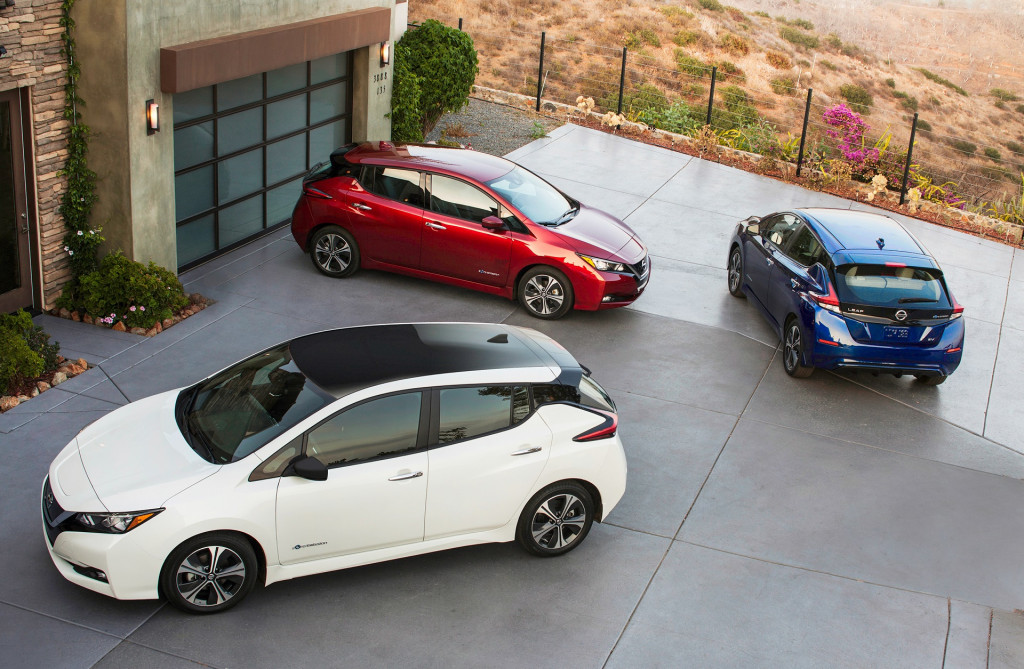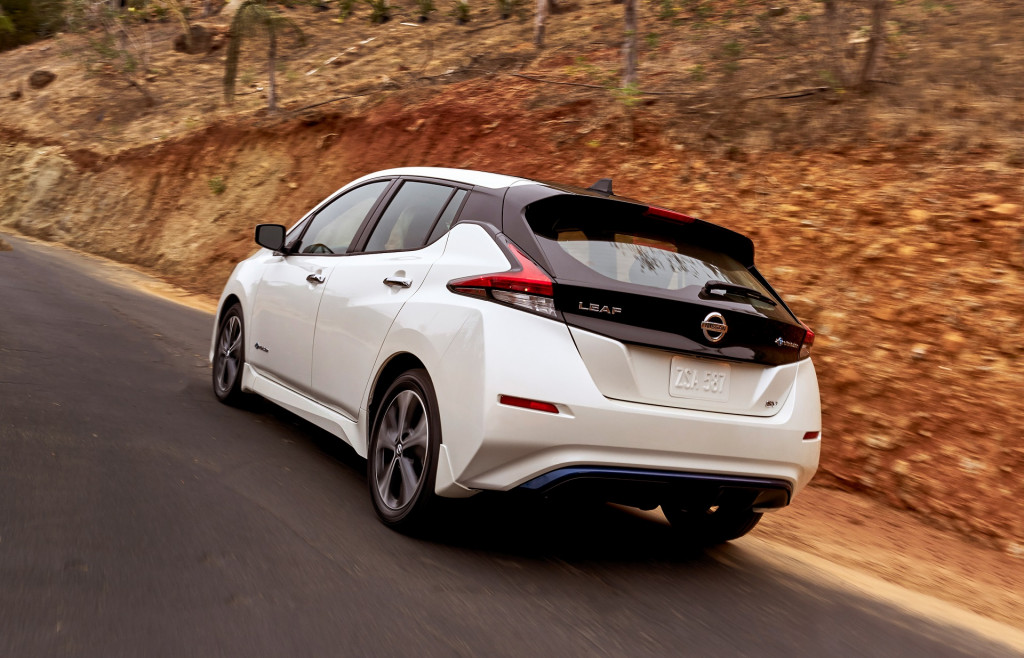When the 2018 Nissan Leaf electric car arrives at dealerships early next year, it will offer fresh styling inside and out, more power, a 150-mile range, and an array of standard or optional active-safety features.
It will come in Nissan's standard three trim levels—base S, mid-level SV, and top-of-the-line SL—with option packages at each level.
Somewhat confusingly, though the 2018 Leaf will offer three different types of cruise control, depending on trim level and options.
DON'T MISS: 2018 Nissan Leaf review
We thought we'd go through them here to help early shoppers sort through the choices as they assess the new Leaf against other electric cars.
All versions of Nissan's 2018 electric car, even the most basic Leaf S—priced at $30,875 including delivery (before incentives)—will have some kind of cruise control.
The base Leaf S has standard cruise control: The driver sets the speed, and the car stays at that speed.

2018 Nissan Leaf
This is cruise control as most drivers have known it for 20 years, with the driver responsible for avoiding cars ahead.
It's not necessarily a standard feature on every compact to mid-size hatchback, but it can reduce energy use at highway speeds by making continuous and minimal adjustments to power demand that are much finer than a driver's right foot can achieve.
Moving past the base trim level, the middle Leaf SV and the top Leaf SL both step up to adaptive cruise control.
READ THIS: 2018 Nissan Leaf: does it pioneer the 'mid-range' electric car?
Nissan calls it "intelligent" cruise control; regardless of name, it uses forward-facing sensors and control logic to keep the Leaf a safe distance from the car ahead.
While the driver no longer has to accelerate, he or she does still have to steer.
That brings us to the third option for cruise control, part of the Tech Package offered only on the Leaf SV and Leaf SL.

2018 Nissan Leaf
It's called ProPilot Assist, and it blends the adaptive cruise control of the SV and SL models with active lane control, which goes beyond traditional lane-departure correction systems by keeping the car centered in its lane.
That means the car is accelerating, braking, and steering itself—as long as the driver's hands remain on the steering wheel except for very short periods.
CHECK OUT: 2018 Nissan Leaf electric-car prototype driven: first impressions
This is what's defined as Level 2 autonomy, the second of five levels defined for self-driving cars.
It's similar to functions built into the Tesla Autopilot system, Cadillac's SuperCruise that will also launch this year, and features from other automakers to make highway driving easier.

2018 Nissan Leaf
ProPilot Assist will roll out through many Nissan vehicles over the coming years, but it arrives first on the electric Leaf. It serves as a "halo" feature, one that draws attention to the car's advanced technology, which fits nicely with its longer-range all-electric powertrain.
The 2018 Nissan Leaf comes with a 40-kilowatt-hour lithium-ion battery pack and a projected range rating of 150 miles.
ALSO SEE: Nine things you should know about the 2018 Nissan Leaf electric car
Its 110-kilowatt (147-horsepower) electric motor is considerably more powerful than the 80-kw (107-hp) motor in the first-generation Leaf.
The latest Leaf also comes standard with what Nissan calls e-Pedal, providing what experienced EV drivers call "one-pedal driving” via increased regenerative braking.
_______________________________________













